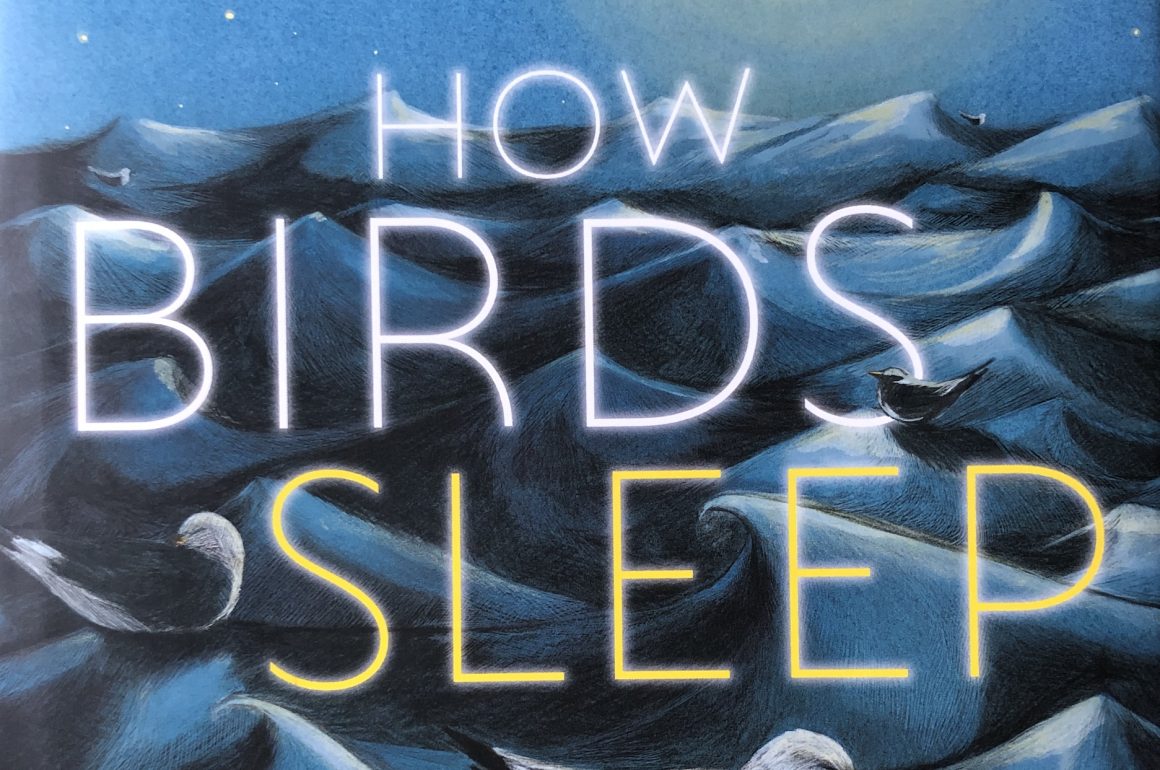
What one thing do parents of younger children always need?
Bedtime books.
The best ones are interesting but soothing, familiar yet new. They are books that children will love and adults can read, and re-read, over weeks, months and often years. In that very demanding category, Sarah Pedry and David Obuchowski’s award-winning How Birds Sleep is a gem.
Of course, How Birds Sleep isn’t limited to bedtime reading. Birds are a common thread that unites us, and the question this one poses is intriguing to all ages. We’ve all seen birds in flight, on the ground, in shrubs and trees—but asleep? Rarely, if ever.
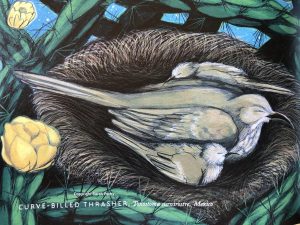
Curve-billed Thrasher by Sarah Pedry
The inspiration for the book came from a trip to a used bookstore. Sarah was pursuing the nature section when she discovered an academic book on a largely unexplored topic. It was naturalist Alexander Skutch’s 1989 Birds Asleep.Her first thought of “I can’t believe I’ve never thought about this before!” was quickly followed by “This would make a great picture book.”
Sarah had become interested in birding when the couple’s children were young. Watching birds in their yard enabled her to feel close to nature again. She immersed herself in birding (David, her husband, jokes that she is now one of those people with binoculars everywhere!), including taking Cornell Lab’s comprehensive bird biology course. With Skutch’s book as inspiration, Sarah started researching and sketching out ideas. Along the way, she invited David—a writer and musician—to take a more active role, and the book became a collaboration.
Uncovering just exactly how and why birds sleep was a journey that took years. While Sarah researched, David reached out to experts for interviews, including Dr. Felicity Arengo at the American Museum of Natural History who provided insights and footage for sleeping flamingos, and TJ Benson, Senior Wildlife Ecologist at the University of Illinois who helped with understanding unihemispheric sleep. The answers they found to the question of how birds sleep vary widely. Some birds sleep snug in nests, while others may be hidden in snowdrifts, soaring in flight, or rocking on waves.
Backmatter on “What exactly does it mean to be asleep?” explains some of their findings. Scientists have mounted sensors on birds to monitor electrical signals and found clear differences between waking and sleeping brains, as well as evidence that points to brain patterns that—in humans—would correspond to dreaming states. Some birds have evolved the ability to ability to sleep with only one hemisphere of their brain, so they are able to fly and sleep simultaneously!
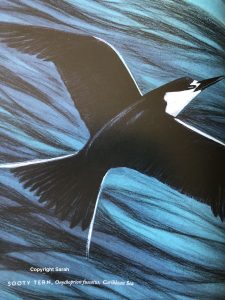
Sooty Tern by Sarah Pedry
The illustrations for the book are by Sarah. A teaching artist at the School of Botanical Illustration at Denver Botanic Gardens, she earned her BFA from Kansas City Art Institute and her MFA at Maine College of Art. She starts most of her works with large charcoal drawings. For How Birds Sleep, she did everything by hand, using a layered technique, with the drawing on top of a color layer in a process similar to print-making. The result is a dreamy series of spreads, with the blues and blacks of night predominating.
For Sarah, one of the more fascinating birds was the Andean Flamingo (Phoenicoparrus andinus), who sleeps—with one leg tucked up—in water that freezes at night and must break free of the ice when it wakes. David loved the Common Tailorbird (Orthotomus sutorius), whose skill, he noted, is anything but common. This tailorbird is named for its ability to sew leaves into nests, sometimes using spider silk as thread.
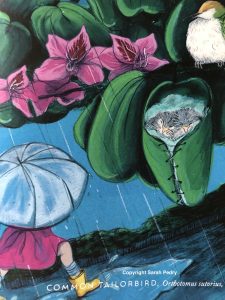
Common Tailorbird by Sarah Pedry
One section of backmatter addresses climate change. The extreme weather that results from climate change destroys habitats, reducing the places where birds can roost. Like all creatures, birds need sleep to survive. By creating structures, keeping the lights low, and providing water, we can help birds sleep—and survive.
In the year since its publication, How Birds Sleep has steadily garnered awards, including being named as a prestigious “Outstanding Science Trade Book” by the National Science Teachers Association and Children’s Book Council (NSTE-CBC). It was shortlisted for the Green Earth Book Award and is on the Bank Street Best Children’s Book list. It’s easy to understand why. This book is a treasure that deserves a space on home, school and library shelves.
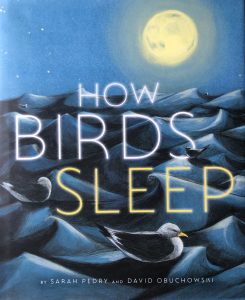
Cover of HOW BIRDS SLEEP by Sarah Pedry and David Obuchowksi
**********
How Birds Sleep, By Sarah Pedry and David Obuchowski
MineEditionUS (Astra Books for Young Readers, 2023)
ISBN: 978-1662650970
$17.99 USA; $23.99 Canada
40 pages, Grade level Preschool – 3, Lexile AD830L













Your review almost makes me want to get this book, though I do not have any kids. Maybe I can read the book to my cats.
Thanks, Kai! It turns out that picture books — especially nonfiction ones like this — are a great source for adults as well as kids. And your cats might love being read to (although my bet is that it wouldn’t affect their sleep patterns at all!).